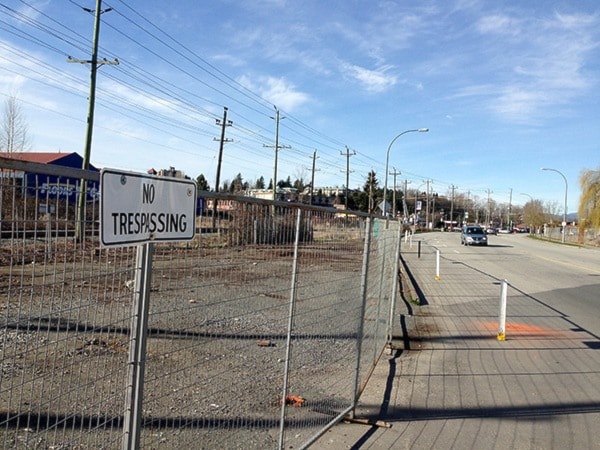Two prominent, long-standing protest homeless camps in Abbotsford came down late last week.
While Mayor Henry Braun hailed the removal of tents from the side of Gladys Avenue and a nearby city-owned property on Cyril Street as a sign of progress, the fundamental causes of Abbotsford’s homelessness problem remains unaddressed, according to Ward Draper of 5 and 2 Ministries.
Residents of the Gladys camp first erected two years ago had been told they needed to leave the site by Feb. 10, after the city passed a bylaw designating the street-side area as a highway. The campers at Cyril, which is technically a park, were told they must take down their shelters during daytime hours, as per a court ruling last year. Both sites are now behind fences.
Braun said the camps’ removal showed the importance of the 40-bed temporary winter shelter on Riverside Road, which he said had been filled to 98 per cent capacity since opening. He noted that 20 more people have also been found housing either in permanent homes, or in detox or transitional housing. That means shelter has been found for 60 people who were homeless, he said.
“I think it’s fantastic, and I’m hoping we can extend it,” he said.
Braun said the fact that the city didn’t have to resort to obtaining a court injunction also signaled that the city’s relationship with its homeless population has improved.
But Draper said major problems remain, although credited the city for using a “softer approach” on homeless issues.
Draper said 11 people were still living at Cyril and Gladys before the order came to move. One person has since found permanent shelter, and a few others have found room in temporary detox and transition housing. But a portion of the campers have just moved to other locations, he said.
Draper said the Riverside temporary shelter hasn’t been as effective as the city says. He noted that the homeless were being housed with varying levels of success well before the shelter was established, but that many of those who find shelter soon find themselves back on the street. He said there remains a lack of support – and permanent housing – for those coming out of hospital or treatment and detox programs.
“That’s not shelter, that’s being housed,” said Draper, who said more information is needed about how many people are finding permanent, long-term housing. He added that service providers are “stretched to the max” and that more funding is needed for outreach workers and case planners.
But while Draper and Braun disagree about the level of progress, they agree that Abbotsford’s lack of rental housing remains a major barrier to helping those living on the street or in parks.
Last year, it was reported that the city has a 0.6 per cent vacancy rate for rental units, with the cost of housing also on the rise.
“We need just housing that people can afford in general,” Draper said.
Braun concurred, and noted that homes will also be needed for dozens of refugee families arriving in the city this month.
Construction on a new 31-bed supportive housing project is anticipated to begin next month, but Draper and Braun say more such facilities – along with a general increase in the city’s rental housing stock – are needed.
Braun blamed the city’s previous anti-harm reduction policy for stalling developments on such projects for years, and said Abbotsford should have at least a couple such facilities operating already.
Braun said the city would wait until the current project is built before considering asking for funding for a second. He said he hasn’t yet heard from the federal Liberal government about its promise to provide billions in dollars for a nationwide affordable housing strategy. In the meantime, he’s hoping that faith groups and others will offer support and housing to homeless men and women who are trying to turn their lives around.
“When people come out of detox or they’re stabilized coming out of the temporary weather shelter, they’re going to need some help.”
